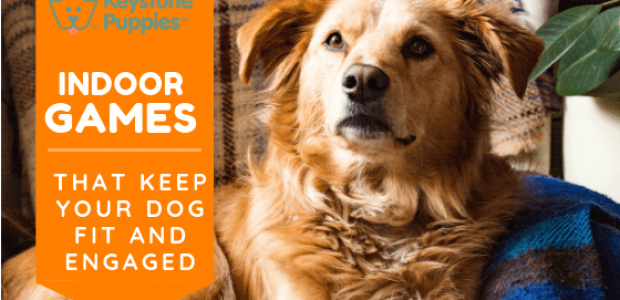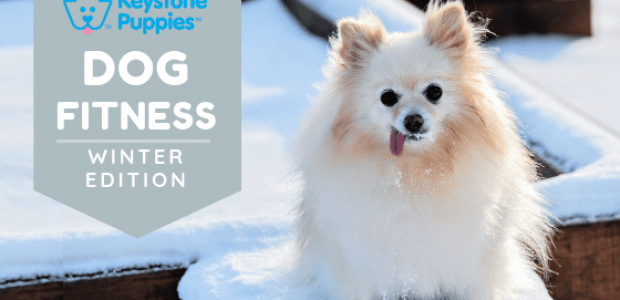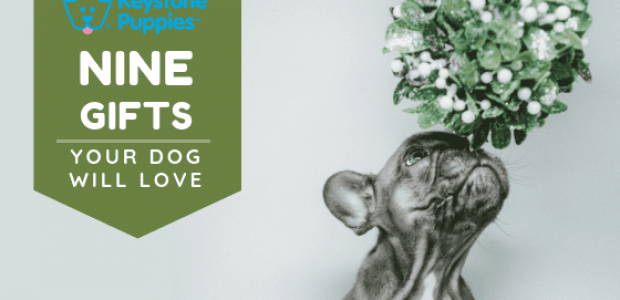Walking Your Dog in the Dark
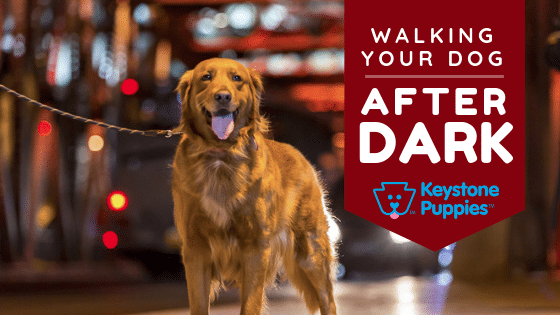
How to Keep You and Your Puppy Safe
As Daylight Savings Time comes to an end, you’ll find that it’s getting darker earlier and earlier. Even though the days are getting shorter, your dog needs just as much exercise as ever. In rain and shine, in sunshine and dark, your pup needs regular walks and time outdoors.
For many people who walk their pups before or after work, the arrival of fall and winter means that morning and evening dog walks must now happen in near or total darkness. While dogs don’t seem to mind walking in the dark, many dog owners understand that walks before sunrise or after sunset require extra precautions.
You and Your Dog Need to see in the Dark
The primary hazard of early morning and night walking is that you and your dog can’t see as well. While some people are able to stick to well-lit sidewalks, for others, lighting is less reliable, or absent altogether.
There are a lot of ways to enhance your night vision. A simple, handheld flashlight is an easy way to light up the night, but carrying a flashlight while walking a dog can be cumbersome, especially when it comes time to clean up after your dog.
Fortunately, it’s not hard to find retractable leashes with flashlights built in, so you’re able to hold the leash and the flashlight in one hand. Some of these retractable leashes also offer other lighting and safety features two-way flashlights or blinking hazard lights. Dog collar and leashes with LED lights are another way to light your way.
Camping and running retailers are a good place to shop for other night lighting solutions. For example, fitted camping caps with built-in LED headlamps are currently a popular and affordable option. Running retailers will offer a variety of lightweight wearable lights designed for runners.
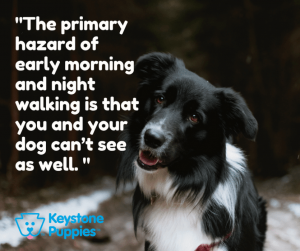
Choose a Familiar (and Safe) Route
While it’s fun to explore new places with your dog, it’s not a good idea to do it during night walks. Stick to familiar routes, so you understand the terrain and the safety of the area and are aware of a potential car or bike hazards.
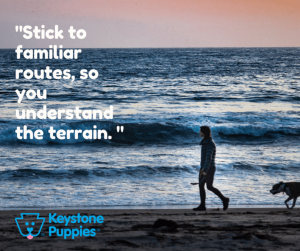
Avoid hiking or off-road walks when the sun is down, and stay away from wilderness areas where you or your dog might be distracted (or endangered) by creatures like raccoons, skunks, coyotes, or even bears.
Personal injuries for you and your dog are also more likely off road. Falls, stumbles, twisted ankles, and bruises are much more likely when you stray from paved paths. Those dangers are exponentially amplified in the dark. It’s safer to stick to sidewalks, pathways, or even low-traffic roadways.
You and Your Dog Need to be Seen in the Dark
The best way to avoid danger when the sun is down is to make it easy to see you and your dog. You should wear reflective vests, hats, armbands, or shoes. Avoid dark colors and try to wear white or beige – it’s much easier to see light colors in the dark. Your dog should wear a reflective collar, and you should use a reflective leash.
Being more visible will make it easier for drivers and bikers to spot you from a distance, and help avoid potentially deadly accidents. Even if you’re not walking in an area with car or bike traffic, higher visibility will reduce the chance that you’ll surprise a skunk or other night creature. Wearing light colors and reflective gear is also a courtesy to other walkers; it’s a signal to other people that you are not a threat. No one likes to be surprised by another person or pet in the dark.
Be Aware and Be Prepared
Finally, you need to be prepared in case of an emergency. Even if you usually leave your phone at home, take it with you on early morning and night walks in case you or your pet are injured. Wear sensible shoes to protect you from glass or other hazards you may not be able to see on the ground when it’s dark. And make sure you and your pup are dressed for the chillier temperatures.
Make absolutely sure cars or bikes see you before crossing in a crosswalk. Wave and clearly, confidently greet other early morning and nighttime walkers. Verbal greetings reassure people that you are not a danger. Confident greetings are often a deterrent to people who might be a threat. Finally, saying hello to other pedestrians is a way to center a nervous dog. He’ll see that you are recognizing new people, so he won’t have to do it for you in the form of barking, jumping, or growling.
*****
Consistent outdoor exercise is critical to the health and well-being of your dog. You should walk your dog every day, in all kinds of weather. But be prepared, be aware of potential dangers, and make every effort to keep you and your dog safe at any time of day or night. If you’re not sure which breed is right for you, research over 200 breeds of puppies here. If you know which dog is right for you, start here to find your dream puppy.




